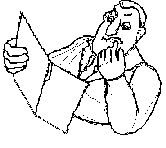

| Book of the Month | ||
 |
English Vocabulary in Use. |  |

Publisher: Cambridge University Press.
Authors: Michael Macarthy, Felicity O'Dell
Elementary.
The book has 168 pages. There are eight chapters. Each chapter has a different kind of vocabulary. It starts with the vocabulary that learners need most often with chapters called Common Vocabulary and Common Verbs.
Then the chapters have big groups - like People or Leisure. The big groups have lots of little groups. For instance, People has one part called Family, and another for nationalities, and so on. Altogether there are 60 units.
Each unit has three to six exercises, and each exercise has six to eight questions, Each exercise will take about 10 min to do. There are a lot of pictures, and some of them are in colour. Some of the exercises are done as games - so you can do word searches, crosswords, and so on.
The book has the same design as Murphy's English Grammar in Use. The left hand pages tell you about the words, and the right hand pages have the exercises. The answers are in the back if you have not bought a classroom copy. Classroom copiesdo not have answers.
Verdict: If are starting to learn English and you want a book that gives you the vocabulary that you need, this book will be a good choice. You can use it to study on your own, or in a class. We think that our online vocabulary games are more fun, but you can't be on the internet all the time.
(The next book in the series is called English Vocabulary in Use: Pre-intermediate and Intermediate, but we have not been able to review it yet.)
Assessment 8/10
English Vocabulary in Use - Upper Intermediate and Advanced.
This is the largest book of the series. There are 292 pages and 100 units for the student to work through. The vocabulary is aimed more at advanced than upper intermediate students, and some of it is quite complex. Unless you are sure your English is good, try some of the Advanced vocabulary exercises on this site before you buy the book.
There are fewer pictures than there are in the other books, and the pictures are not in colour. The exercises are more formal with fewer word games and crosswords. Sometimes it is a bit hard to understand what you are supposed to do. More examples would be useful.
The book covers a number of topics suitable for advanced students - abstract nouns, countable or uncountable measurements, the language of notices and idioms are all included. However, because English is an extremely rich language, the vocabulary here, though useful, is not at all a complete set of the words that an advanced student will need. However, using this book will certainly help to improve your vocabulary, and it is a fact that people with good vocabulary make fewer grammar mistakes, because they do not need to torture the language to get their meaning across.
Exercises usually have six to eight questions and should each take about 10 minutes to complete. The number of exercises in a unit varies. At the back of the book there are indexes and a phonetic transcription of some of the words used. But as an internet user you might like to use one of the free speaking dictionaries which actually say the word. (See language resources in our products and services.)
With the usual "Murphy" layout of explanation on the left and exercises on the right, this book is suitable for use by students working alone or in a class. Children under the age of 15 will probably have trouble with some of the subjects in the sentences (politics, business), so this book is more suitable for college students or older.
Verdict: A good book for students who want to extend their vocabulary and are prepared to work hard. Some parts of the book could have more examples, and the layout of some pages is slightly confusing, but this is still a very useful book for more advanced students.
Assessment 7/10